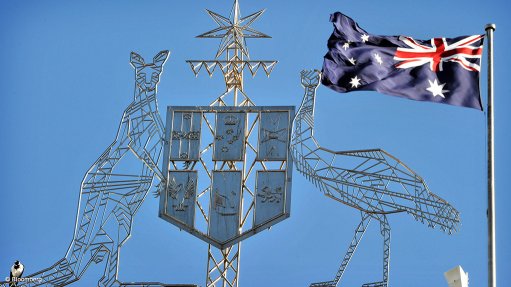
Photo by: Bloombeg
PERTH (miningweekly.com) – Federal Resources and Energy Minister Josh Frydenberg this week said that the government’s National Innovation and Science Agenda (NISA) would provide a boost to Australia’s resources and energy sectors and northern Australia’s development.
Prime Minister Malcolm Turnbull this week announced a multibillion-dollar investment into NISA in the hopes of transforming the country’s economy and driving prosperity and competitiveness.
The funding would be divided into a number of government initiatives, including A$250-million going towards the Australian Synchrotron, A$294-million towards the Square Kilometre Array, A$1.5-billion towards the National Collaborative Research Infrastructure Strategy, A$200-million to the CSIRO Innovation Fund and A$250-million to the Biomedical Translation Fund.
Minister Frydenberg said on Tuesday that the resources and energy sectors would benefit from a renewed focus on collaboration, a key pillar of NISA.
“The benefits of collaboration within these sectors are highlighted by a recent project between CSIRO and global mining company AMIRA. The improvements in mapping and geochemistry that followed this collaboration led to gold deposits worth A$12-billion, two lead/zinc/silver deposits and two copper/gold deposits all being found within Australia.”
He added that innovation had always been a key factor for the success of Australia’s mining and energy sectors, and had led to Australia developing 60% of the world’s mining software, while these sectors spent A$1.8-billion on research and development (R&D) in 2013/14. This equated to 10% of Australian R&D spending.
“NISA follows a number of important initiatives implemented by the government to boost innovation in these sectors. These initiatives include a A$100-million Exploration Development Incentive to support new exploration by junior miners by providing investor tax offsets, and establishing two Industry Growth Centres dedicated to expanding Australia’s excellence in mining equipment, technology and services, and the oil, gas and resources sectors,” Frydenberg said.
He added that Australia’s northern universities were well placed to take advantage of this innovation focus.
Collectively, Central Queensland University, Charles Darwin University, and James Cook University, obtained the highest possible ranking in 13 different research fields in the Australian Research Council’s Excellence in Research 2015 report. In particular, Australia’s northern universities were well placed to capitalise on NISA’s focus on tropical health and medicine through the new Biomedical Translation Fund to help commercialise breakthroughs in tropical disease R&D, Frydenberg said.
“A more innovative Australia will keep our nation competitive, create new jobs and opportunities for all Australians, and maintain our high standard of living. Importantly, it will also keep Australia’s resources and energy sectors strong while boosting the development of northern Australia.”